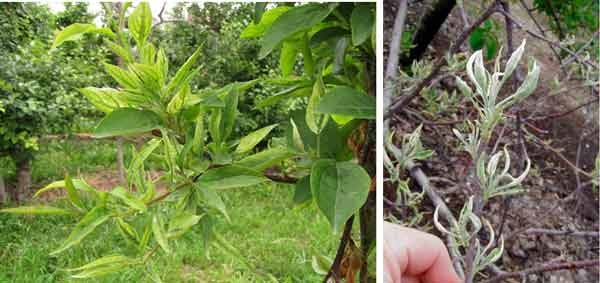Attack by opportunistic pathogens
Attack by opportunistic pathogens (Continued from last month)
Many of these apple trees are being attacked by opportunistic pathogens at the point of injury, which occur as basal or stem cankers.
Michigan pathologists found at least six different species of pathogenic fungi in stem cankers.
In New York, they are primarily seeing one pathogen, Botryosphaeria dothidea. In Australia this is known as Fungal Gummosis and affects vines and fruit trees.
While glyphosate may not directly kill bark, it may make it more prone to injury and to invasion by weak fungal diseases that need injured tissue to infect.
The negative effects of non-lethal doses of glyphosate are very subtle and may take several repeated applications over a number of years to develop visual symptoms.
Relationship not proven scientifically
While this relationship between glyphosate and trunk cankers has not been proven scientifically, there is enough anecdotal evidence from several locations to suggest that there is an important interaction with glyphosate herbicide and fruit trees.
Minimise potential damage
What can you do to minimise damage and still use this valuable herbicide?:
- Avoid using glyphosate on young trees or soft tender or green bark of older trees.
- Avoid using glyphosate on other combinations in late summer autumn where there is a greater risk of downward translocation into roots
- Limit glyphosate applications near trees to spring or early summer.
- Avoid spraying the tree trunk and all green tissue (leaves, low hanging limbs etc.).
Use Delta T as an indication for the correct conditions for spraying to avoid spray drift.
Use glyphosate products that contain no surfactants—usually the 450 a.i. formulations. Mix your own wetter so you have more control over the uptake by the tree.
See this article in Tree Fruit Oct 2016




















